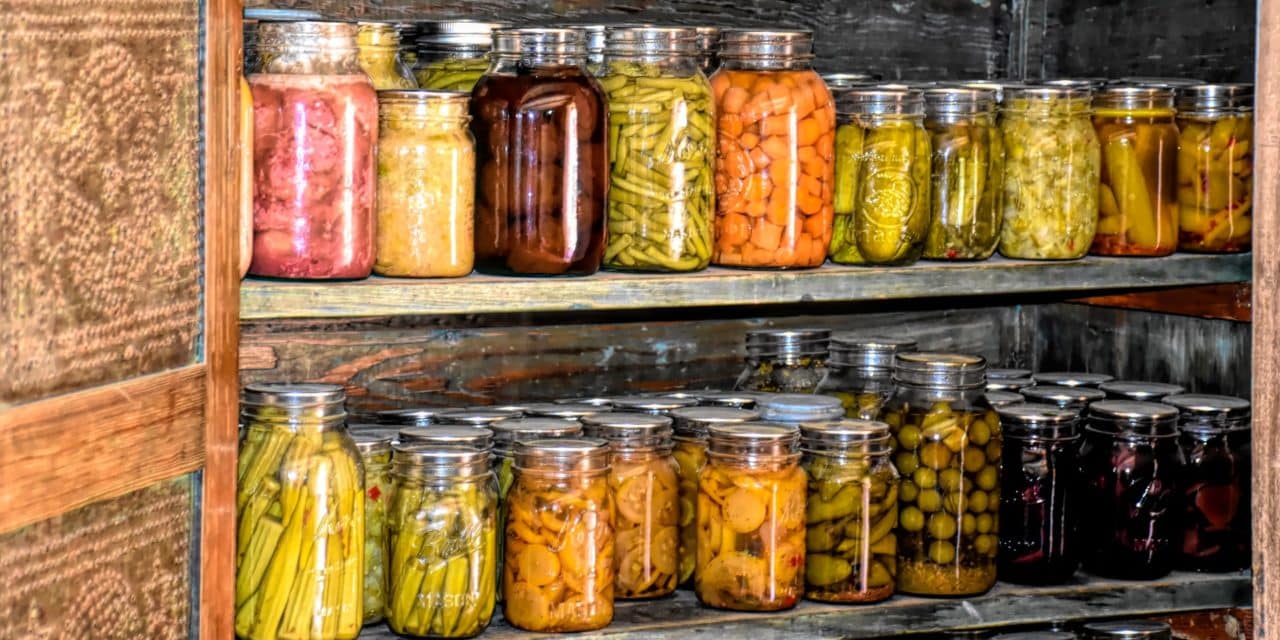FEMA and the American Red Cross recommend a minimum two-week supply of food and water should be stored for use in case of emergency. I would recommend at least double that amount as the minimum and ideally a one year supply. And yet I understand the recommendation because most people don't have any emergency food supply or emergency water supply at all. So where should you begin?
First, don't get overwhelmed. None of us began our food storage programs with everything all at once. It may take some time to build up your emergency food supply. You can start with canned goods, food bars, dried fruits and dry mixes that don't require any refrigeration. Try to stock foods that your family normally enjoys eating as this will lift morale in an otherwise stressful time. As you put together foods take into account any allergies or special diets and the ages of the people whom you will be feeding.
As you begin storing your emergency food supply set up a rotation based on the expiration dates of the various foods. Store the oldest foods in front so they can be used before they expire. As you add new supplies be sure to put them in back, behind the older supplies so the rotation stays in order. Take care to use storage containers that are air-tight and offer protection from pests.
An alternative to storing canned goods, food bars, dried fruits and dry mixes that oftentimes only last six months to a year and must be constantly rotated is to purchase an emergency food supply that is freeze-dried. These freeze-dried meals require no refrigeration, are lightweight and come packaged in re-sealable pouches that are stored in plastic buckets that are constructed to stack on top of each other for compact food storage. These emergency food supplies have a 20 year shelf life and are available in sizes that will last an adult from one-week to one year or more, depending on your need. Freeze dried meals offer a wide variety of foods so you don't get tired of eating the same thing for every meal. All you usually need to prepare these foods is water. An emergency food supply of freeze-dried meals is my first choice because I don't have to remember to constantly rotate foods in and out of the storage area.
Your emergency food supply storage area should be a cool, dry and preferably dark. Take into account the type of disaster that may be most likely to befall your area when choosing a storage area. For instance if tornadoes are prevalent in your region you probably don't want your emergency food supply to be stored in the upper floor of your home if it can be avoided as that is an area that is more likely to suffer damage and thus loss of your food supply. Likewise you wouldn't want it in a damp basement either. In some circumstances it may be wise to have more than one storage location so if one is lost another may be accessible.
Though we may think about and discuss emergency food supplies more often, emergency water may actually be more important. Most of us would survive longer with no food than we would with no water. While you can store properly treated water in your own sanitized water storage containers it is recommended that you replace it every six months. Again my preference would be to purchase water. There are two options here. You can either buy regular bottled water, which usually lasts for about a year or you can buy emergency water that is specially packaged to last for 5 years and meant specifically for disaster preparedness. Either way you'll want to be mindful of the expiration date but the emergency water will be packaged to keep for a longer period of time. Whichever way you choose to supply water, it's important to have at least a gallon per person per day. The average person should drink at least a half-gallon of water per day. Under some circumstances you may need to drink more than a half-gallon of water per day. If you drink a half-gallon the other half-gallon can be used for cooking or hygiene, etc.
You will also need a way to cook during a disaster. I prefer to have a propane camp stove available for emergency food preparation. Please note that a camp stove should never be used indoors. A simple camp stove is small, easy to use and will accommodate most cookware. Don't forget to have a supply of propane fuel bottles stored with your camp stove.
Preparing an emergency food supply for your family is very important and could have a significant impact on the outcome should disaster strike. And though it does require some attention to detail it doesn't have to be hard or overwhelming.
[ad_2]


